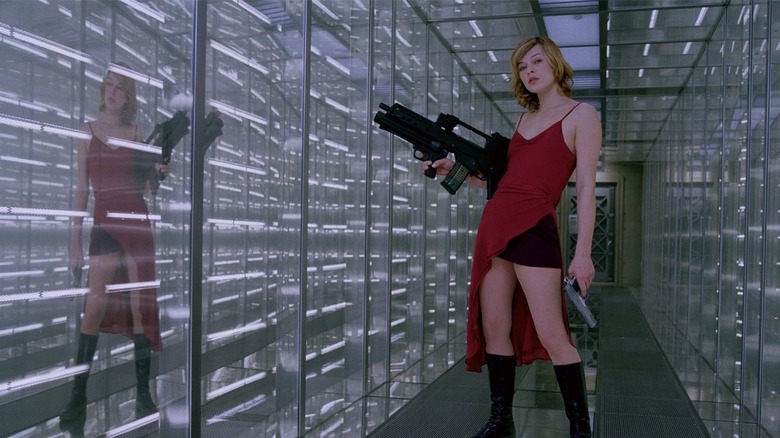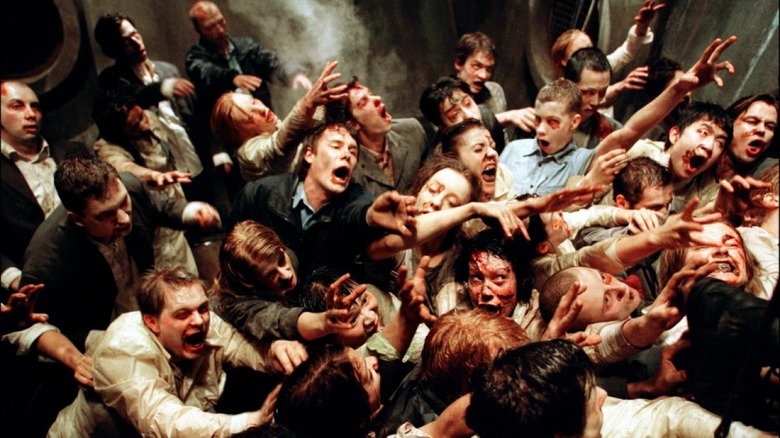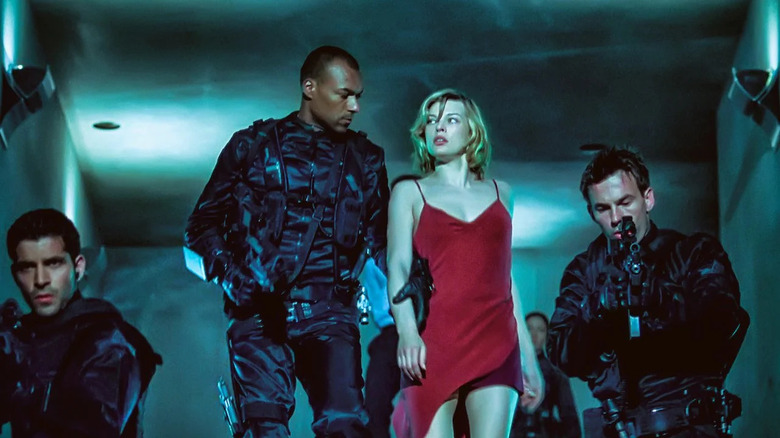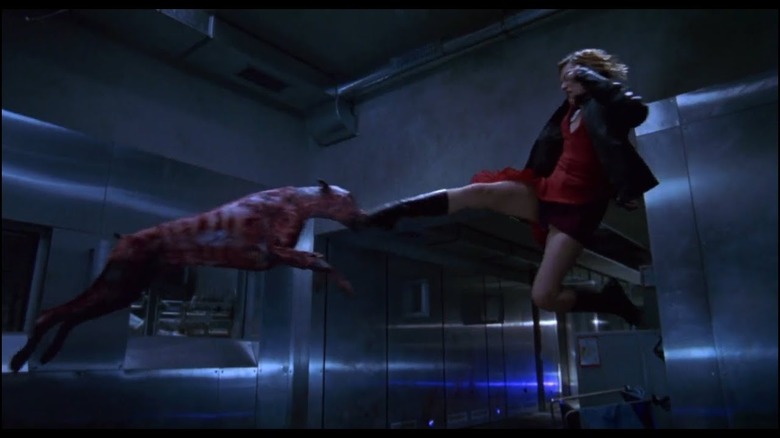Why George A. Romero's Vision For Resident Evil Never Made It To Film
Talk about the one that got away! With the 1968 film "Night of the Living Dead" and its subsequent sequels, filmmaker George A. Romero cemented his legacy as the king of the zombie film. He singlehandedly created the horror subgenre while using zombies for social and political critique. And 1996, the Capcom video game "Resident Evil" was released on the PlayStation console using Romero's favorite subject matter: zombies. The game's narrative follows a special task force sent to investigate a string of grisly murders outside the fictional Raccoon City, USA, when they find themselves battling zombies and mutant creatures. The game was innovative and incredibly popular — there have been over two dozen console entries in the survival horror franchise, and the series is still releasing new titles to critical acclaim and financial success to this day.
After the success of the early games in the series, Constantin Film acquired the rights to the game and partnered with Sony Pictures to begin adapting "Resident Evil" for the big screen. In a perfect world, Romero would be the logical choice to take the helm of the franchise, giving him an opportunity to create a fresh take on the horror subgenre he defined decades earlier. And we came oh-so-close. Despite early flirtations with Romero, the studios turned to Paul W.S. Anderson, a more than capable director, who previously adapted the video game "Mortal Kombat" and had recently directed the gory sci-fi/horror film "Event Horizon."
Still, we're left to wonder: why not Romero, and what might have been if he'd been chosen to write and direct the 2002 film "Resident Evil"?
Romero directed a live-action trailer for the game
According to Fangoria, "Resident Evil" game creator Shinji Makami was influenced by the king of the zombie genre, and it shows in the series. The games and subsequent movies follow the zombie tropes created by Romero's early work. The undead crave human flesh, infection is spread by a zombie bite, and you can only kill a zombie by destroying its brain. Capcom even hired Romero in 1998 to direct a live-action commercial for the video game's sequel, "Resident Evil 2."
Romero was then tapped by Sony Pictures and Constantin Film to adapt the game as a full-length movie. Romero's initial screenplay stayed faithful to the game's narrative, but producers thought his first draft was too violent, which is kind of laughable considering the genre. Romero's first draft can be read here, and fans of unmade "What if?" movies will find much to treasure. Several more drafts would follow, but because the console games had already progressed beyond the original storyline Romero was trying to adapt, producers passed on all of Romero's scripts and eventually settled on Anderson as his replacement.
Romero's version was true to the games
Gaming purists would likely have enjoyed Romero's version of the film more, as he intended to stay true to the game's original, horror-first narrative. In an interview in Fangoria #211 from April 2002, the filmmaker offered some insight into his version of the adaptation. Romero said:
"I wanted it to be like the game and maybe visually like 'Day of the Dead,' darker and confined. It's like a nightmare you can't get out of. You're in a corridor and you turn a corner or open a door and you're just in another small space. I was trying to stick with the game, and I worked with its designer. He gave us secrets from the second game, which had not been released yet. So, some of the creatures and so forth came from that."
Paul W.S. Anderson's version of "Resident Evil" shares some slight similarities with the game, but strays far from the original narrative. While most of the game takes place in the Spencer Mansion, the film uses the mansion simply as a plot device to access Umbrella Corporation's underground laboratories, where most of the action takes place. Anderson also leans heavily into slick, bombastic action, a far cry from the slow-moving dread of the early games in the series ... and of Romero's screenplay.
Anderson created a new protagonist
The movie shifts the focus from the Raccoon City S.T.A.R.S. (Special Tactics and Rescue Service) task force, introducing the new protagonist, Alice (Milla Jovovich), who would define six of the franchise's seven films. Anderson also introduces a new antagonist, the A.I. in charge of the underground facility, known as the "Red Queen." Anderson uses the frustratingly convenient plot device of memory loss, where the main characters remember things only when they are stuck and need to move on to the next plot point. Some familiar creatures do return, including the zombie dogs, but it's not enough to satiate those wanting something more germane to the game's story.
"Resident Evil" is not a bad film, and has its share of memorable moments. The Umbrella Corporation's underground facility leads to some great visuals. There's some neat action and cool monsters. The laser hallway scene is particularly intense, ending with the team leader's body being sliced into a waffle pattern.
The film would gross more than $100 million according to Box Office Mojo, spawning five sequels, all written by Anderson (who also directed four of the six). The 2021 reboot "Resident Evil: Welcome to Raccoon City" feels a bit more like what Romero might have planned for his film, staying daily true to the narratives from the first two "Resident Evil" games.
And despite all the success of the "Resident Evil" film franchise, fans of the zombie genre will always be left to wonder about Romero... "What if...?"



